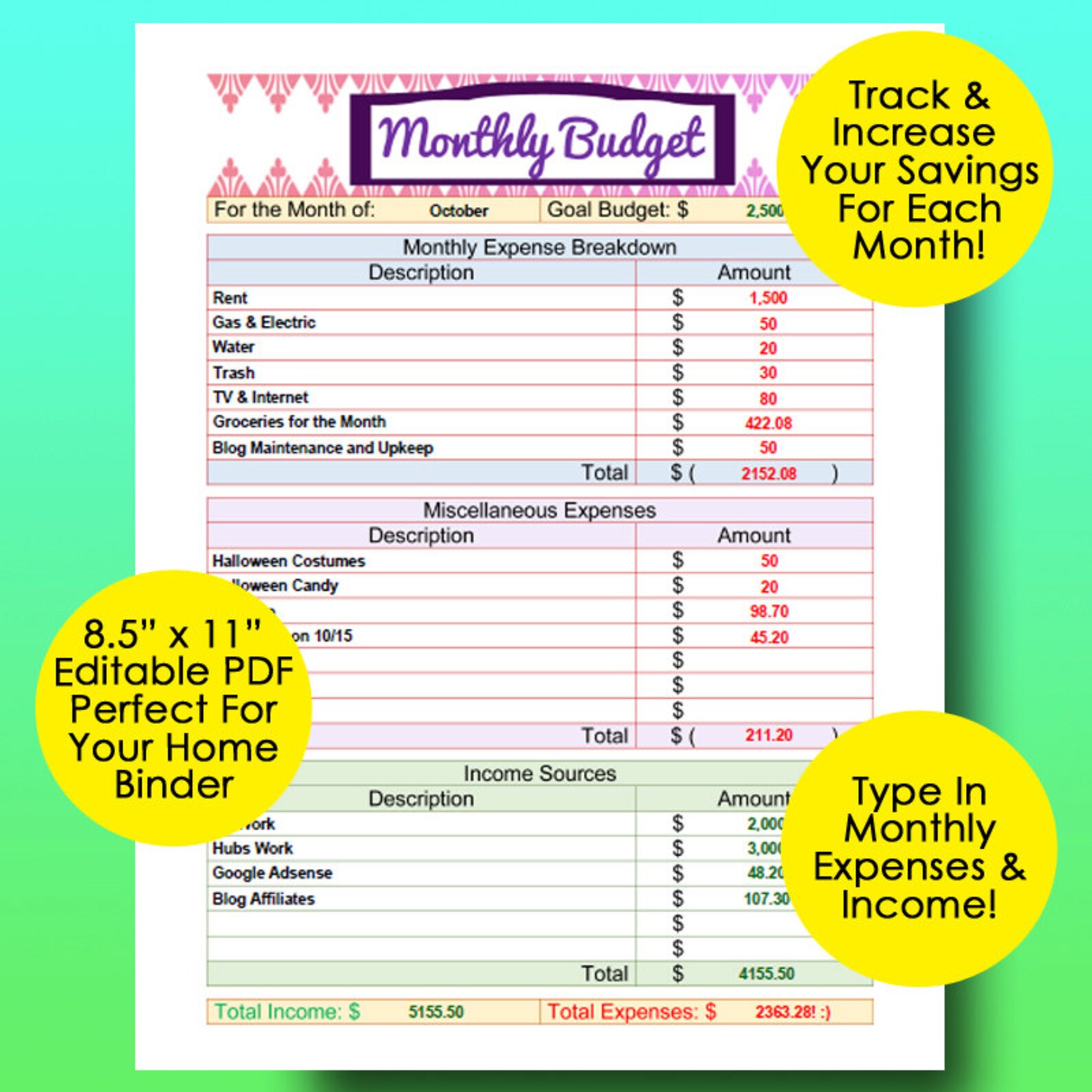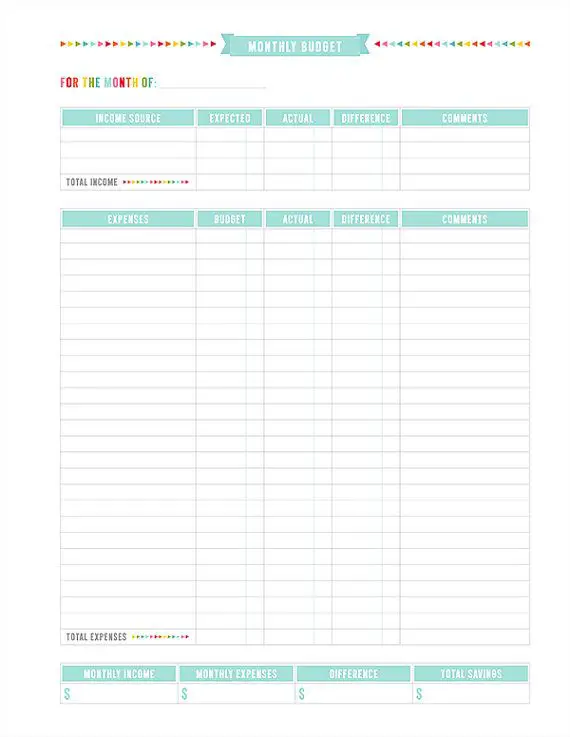

Once you’ve included all your incomings and expenses, the planner can add them up and let you know exactly how much money you’ve got left over once all your expenses are covered. Using a budget planner can take the heavy lifting out of doing the maths. That means it might prompt you to include some you could otherwise have forgotten. The good thing about using a budget planner is it includes a detailed list of possible expenses. If you want to track it by handwhether on paper or in a spreadsheetyou’ll need to write down all your transactions in each category every day. Use this well-thought-out set of tools and simple layout to get things done easily. every month, put it in the Other expenses this month category. If you have an expense that does not occur. Some bills are monthly and some come less often. information to help you plan next month’s budget.
#Monthly budget planning pro
Start by deciding how you want to keep up with your spending. Advanced monthly budget planner designed to help you create and manage your budget like a pro effortlessly. Make a Budget Use this worksheet to see how much money you spend this month. Now that you have your monthly budgeting plan, the trick is to stick to it. Whether its your personal budget, or household budget, once you know where your money. Some of these might seem obvious, such as your mortgage or rent payments as well as electricity and other utilities, but others might take a bit more thinking about, such as how much you spend on going out, or lunch at work for example. Create and track your budget on a monthly basis. Understanding where your money goes is the first step in budgeting.
#Monthly budget planning how to
There are many methods you can use to create a personal spending plan, but following a step-by-step guide is the best way when you’re just beginning to learn how to manage money effectively. Building a budget for the first time isn’t as hard as you might think. This is a very useful tool to organize your finances and track your spending to avoid budget deficits. The Best Way to Create a Monthly Spending Plan in 6 Steps. Also it is a customizable worksheet where you can enter budget information that fits your personal financial needs. The next step is to include all your outgoings. A budget template is a document that contains information about the costs and revenues of a certain project.

To make it easier, you can select on the frequency you get paid (e.g. The most obvious stream of income is likely to be your salary or wages. Using a budget planner to work out your budgetĪ budget planner tool is essentially an online calculator that can be used to run the sums on your incomings and expenses.įirst up, the budget planner has fields to enter in your income.
#Monthly budget planning free
Not only is having a budget is a good way of finding out if you’re spending more or less money than you’ve got coming in, it’s also a good way of staying on track of your bills, as well as setting aside money to work towards savings goals. A personal budget (for the budget of one person) or household budget (for the budget of one or more person living in the same dwelling) is a plan for the. Discover our free online MoneyHelper Budget Planner tool to gain a better understanding of your money coming in and out, and how to improve your finances. If you’re confused about whether something is a need or a want, simply ask yourself, “Could I live without this?” If the answer is yes, that’s probably a want.Using a budget planner can take the heavy lifting out of sorting out your budget – you simply enter in the amount of money you’ve got coming in (such as your salary) and then put in the expenses you’ve got coming out.

It simply means being more conscious about your money by finding areas in your budget where you’re needlessly overspending. And if you discover that you’re spending too much on your wants, it’s worth thinking about which of those you could cut back on.Īs a side note, following the 50/30/20 rule doesn’t mean not being able to enjoy your life. Using the same example as above, if your monthly after-tax income is €2000, you can spend €600 for your wants. Entertainment subscriptions (Netflix, HBO, Amazon Prime).Wants are defined as non-essential expenses-things that you choose to spend your money on, although you could live without them if you had to. With 50% of your after-tax income taking care of your most basic needs, 30% of your after-tax income can be used to cover your wants.


 0 kommentar(er)
0 kommentar(er)
